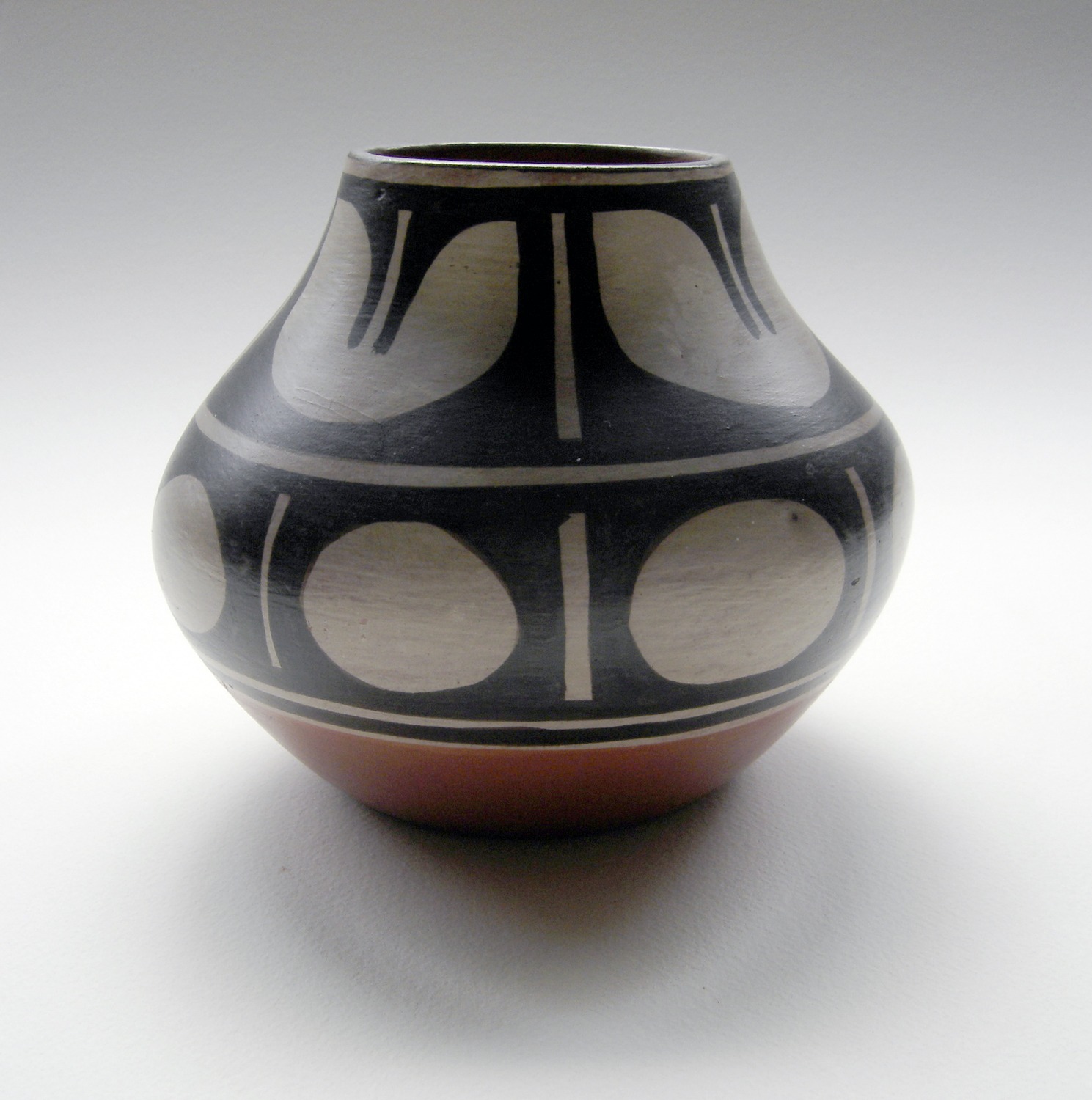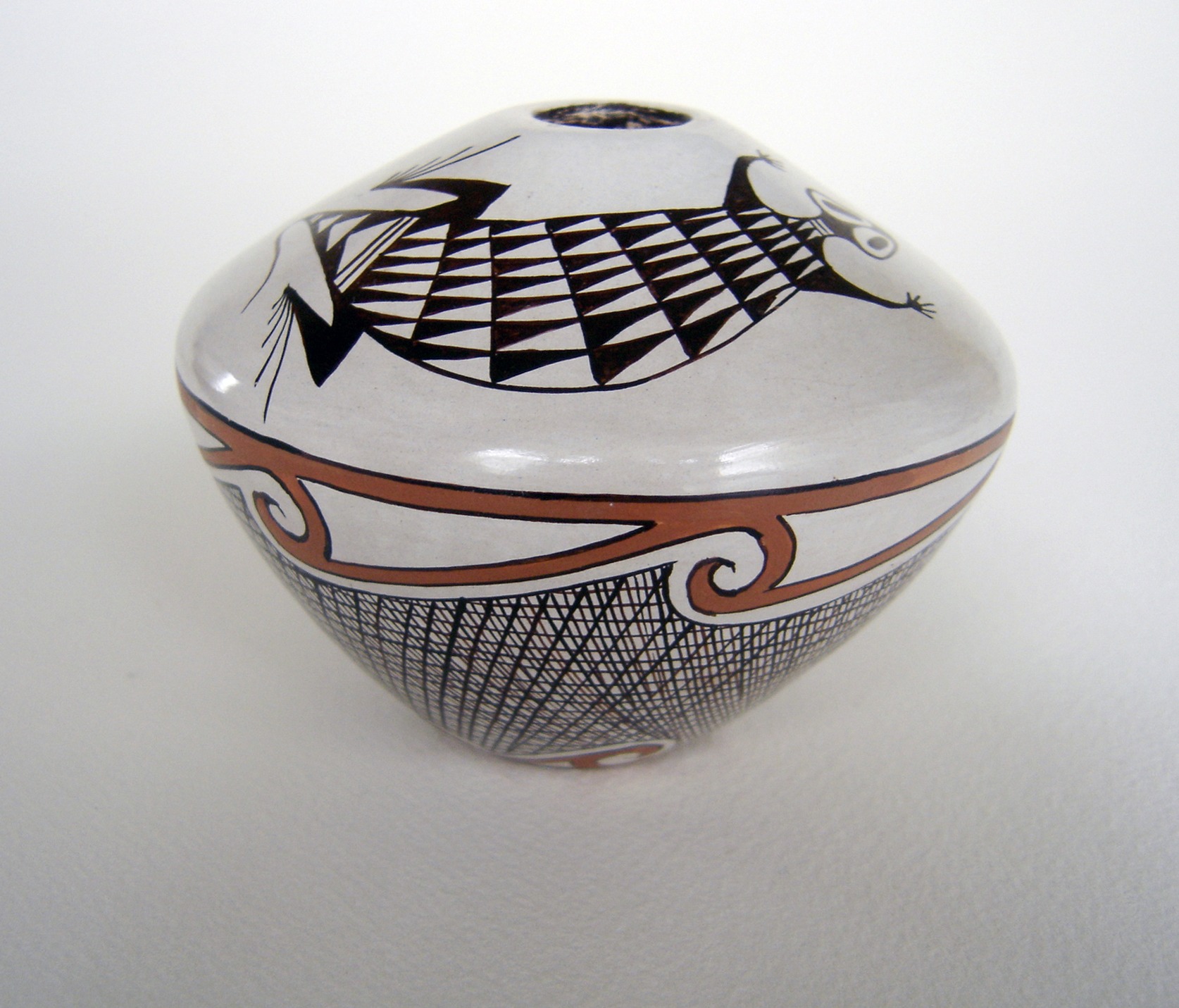 May 17–July 12, 2008
May 17–July 12, 2008
To establish historical context, Pueblo Clay, America’s First Pottery begins with a representative sampling of the Native American pottery collection held by the Pomona College Art Museum. Brought together over the last 70 years, this collection is particularly rich in Southwestern ceramics, both Pre-Columbian and Historic. Select pieces from the Mogollon (including Classic Mimbres), Hohokam, Anasazi, and Salado traditions will be shown to illustrate the most common characteristics of each. Attention will be drawn to raw materials, techniques, uses, and designs. The Pomona College Art Museum holdings were donated primarily by three collectors who were chiefly interested in their anthropological value. AMOCA’s examination will include cultural information and examine the pieces from an aesthetic viewpoint, as extraordinary works of art.
The second segment of Pueblo Clay, America’s First Pottery examines the transition of Native American pottery from a utilitarian vessel or ceremonial object to a marketable commodity, placing emphasis on work from the following pueblos: Acoma, Hopi, San Ildefonso, and Santa Clara, with minor forays into the pottery of Santo Domingo, Zuni, Cochiti, Zia, San Juan, and Jemez Pueblos. This changeover will be illustrated by pieces collected as curios during the end of the 1800s and beginning of the 1900s. The completion of the Transcontinental Railroad system in the 1880’s inadvertently created a livelihood for native people who brought their wares to the railroad stations to sell to travelers and tourists. A Victorian Era belief that Native Americans were a “vanishing race” acted as additional incentive to buy pottery and other crafts as collectables.
The construction of a Chicago-to-Los Angeles highway, officially designated Route 66 in 1926, was another factor that contributed to growth of commercial Native American art production. Soon rivaling the railroad, the highway spawned a multitude of small service businesses to support the traveler. The post-World War II penchant for automobile travel brought motels, garages, and diners to the roadside. Trading posts opened in the deserts of the Southwest, where westward-bound travelers would stop and buy Native American jewelry, pottery, rugs, kachina dolls, and other crafts. Pottery representing this time period–the 1930s, 40s, and 50s–was mostly unsigned; however, with the rise to fame of Maria Martinez (1887–1980), whose black-on-black pottery gained wide-spread notoriety, there came an significant shift. Martinez and a few others began to scratch their names into the bottom of their pots, and more and more potters began to follow suit.
A third section of this exhibition covers the transition from collecting anonymously-made pottery to a demand for pottery created by specific artists. This portion of AMOCA’s exhibition will include pottery by the early matriarchs of specific families that have come to be well-recognized for their pottery: Grace Chapella, Iris Nampeyo, Fannie Nampeyo, Paqua Naha, Helen Naha, Marie Zieu Chino, Lucy Lewis, Sara Fina Tafoya, Margaret Tafoya, Blue Corn, Maria Martinez, and Santana Martinez. Pottery making was traditionally a woman’s craft. Techniques and traditional designs were passed from great grandmother to grandmother to daughter, particularly in certain families, such as the Chapella, Nampeyo, Navasie, Chino, Lewis, Chavarria, Gutierrez, Tafoya, Gonzales, and Martinez families. Soon the list of ceramic artists also included men. Potters became independently recognized by name and by individual style, and by the mid 1980s, Native American pottery collecting had risen to a frenzy.
